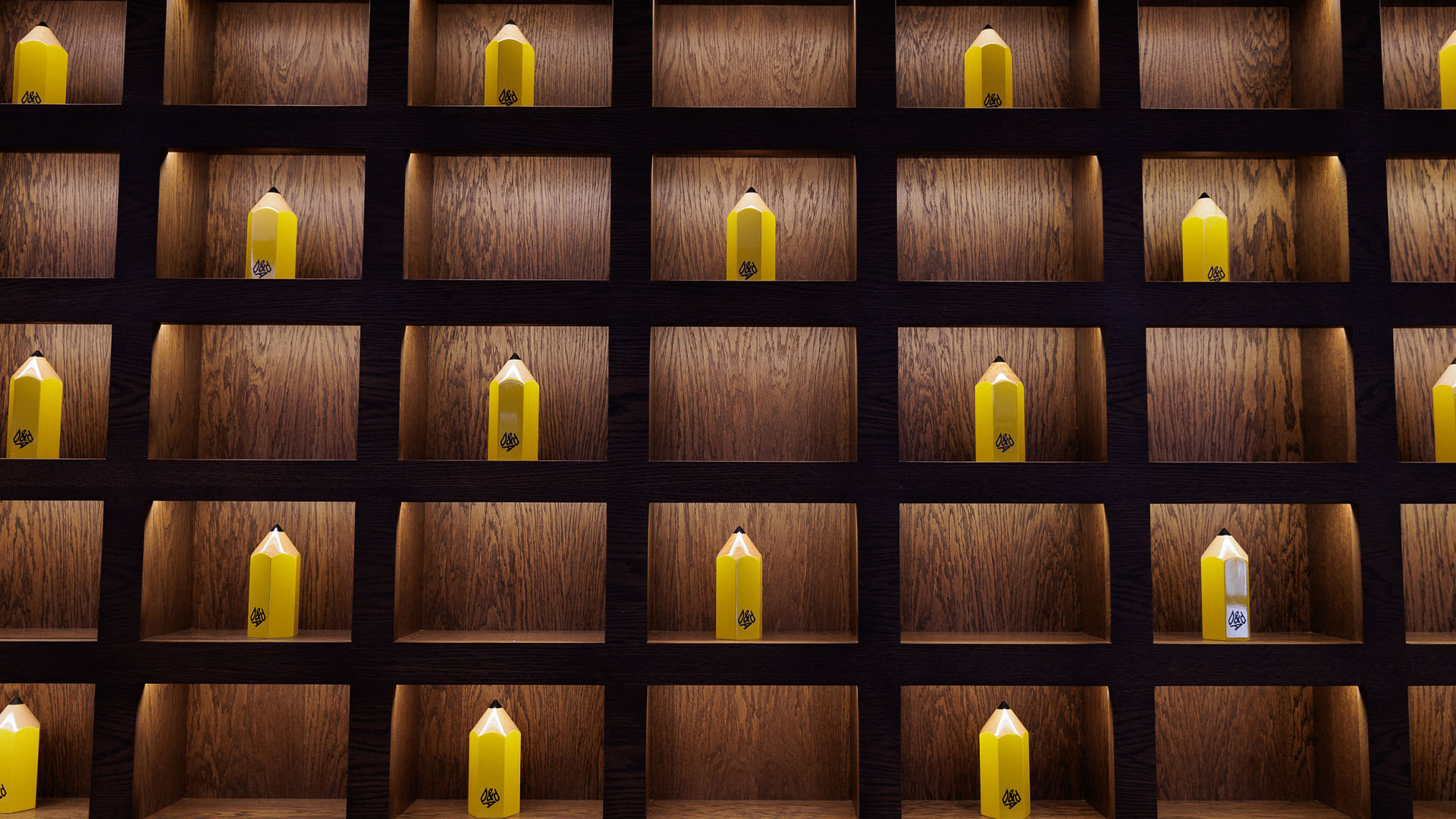How to paint with gouache
Gouache combines the flexibility of watercolour with the flow of acrylics. Here's all you need to know about this underrated medium.
When learning how to draw or paint, there are various mediums and drawing and painting techniques you can try before figuring out what best suits. Gouache might be my favourite medium. It combines the flexibility and workability of watercolour with the opaque and flow of acrylics. I find it to be the most versatile medium to paint with.
Versatile
Gouache can be manipulated using just water and so it is ideal for working in the field or in an office, from quick concepts and studies to final full paintings. This medium has been used in the film and animation industries for decades for layouts, concepts and backgrounds.
You can layer it light to dark or dark to light and unlike watercolour, you can paint in whites instead of masking them off. It can be very affordable and your set up doesn't need to be huge or advanced to be effective with it. Overall, it's one of the most effective and probably underrated mediums out there.
In this article, I'll cover the basics of brushes and which sizes and shapes I like to use. I will also talk about which gouache I favour the most and what my palette looks like.
Because gouache is so workable, I will cover how to use water to your advantage in lifting the medium up and pushing pigment around after it's been dry. I'll also cover how to use the dry brush to your advantage, using the texture of the paper and paint underneath to create strokes and blend colour. Gouache can also be used as watered down as watercolour for blooms and washes. I'll cover how to use these as a base to work over with more opaque strokes.
Get started with gouache
Discover what tools and materials you need and some basic techniques.
Get the Creative Bloq Newsletter
Daily design news, reviews, how-tos and more, as picked by the editors.
01. Brushes
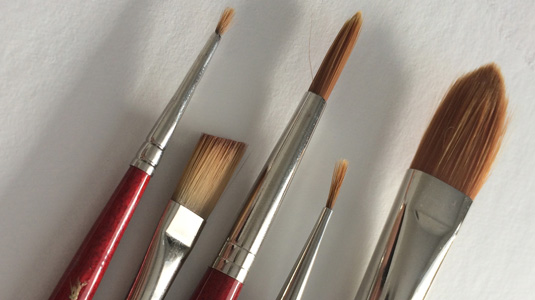
Gouache brushes are basically watercolour brushes. They tend to be made from natural or synthetic fibers and come in a variety of shapes and sizes. I use round brushes quite a bit, but round out my toolkit with square brushes too. Because the medium can be pushed around on paper so easily, the shape of brush isn't as important as oil or acrylic paints. Always keep your brushes wet as you work. This will help spread the gouache and keep it workable as you paint.
02. Paints
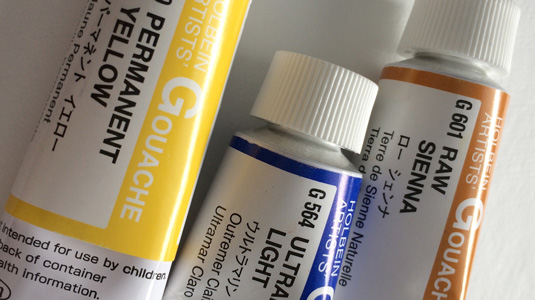
I prefer Holbien Artist's Gouache, but you'll need to experiment with brands to find out which you enjoy working with. Like acrylics, there are lots of gouache pigments available. You only really need a spectrum of colour similar to the rainbow. You can then mix from there to achieve the colour you're looking for. You can use gouache straight from a tube or mix it on a palette. It can be watered down to look like watercolour or be applied opaque like acrylics.
03. Staining
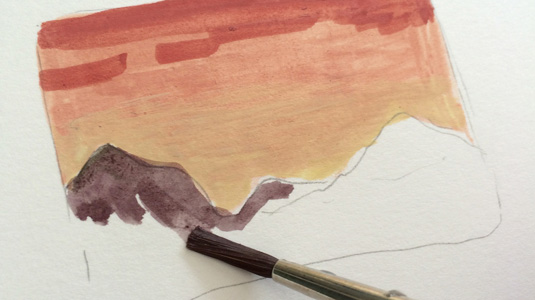
Staining is similar to a glazing. Essentially I am covering the area to be painted with a bit of colour watered down with water to provide a base to work from. I start by mixing my colour and then picking it up with a wet brush. This will help the pigment move around the paper easier. Using even strokes and refilling my brush as needed, I lay in an even coat around the area I want to be painted.
04. Opaque layers
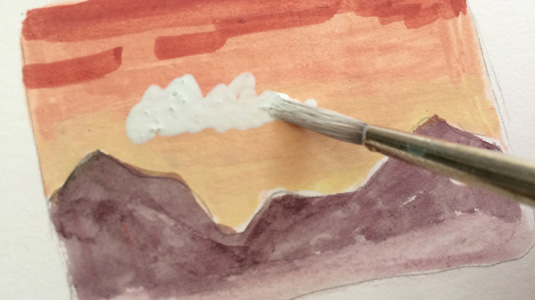
Opaque layers are used to hide layers underneath; similar to painting in acrylic. Because gouache has such a rich and vibrant quality, similar to pastels, it's used in sort of a rough way. The medium has a very tactile look. Using the swatch from before, I lay in a cloud shape with opaque paint to cover the previous layer. This means I am adding hardly any water at all to the paint as I move it around the paper.
05. Softening edges
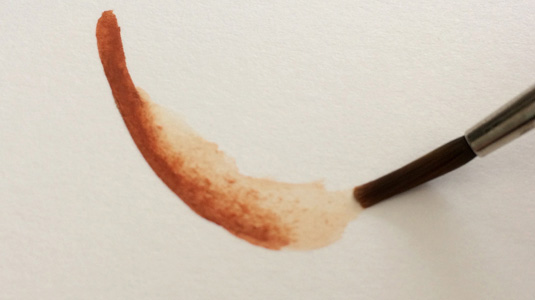
Like watercolour, gouache can be reworked hours or even days after it has been applied. In fact, it stays workable almost indefinitely. To create a gradient between strokes, I load up my brush with water and apply it to the already dry stroke of pink gouache. I pull the pigment into the purple stoke and blend the two together. You can use your brush to push the pigment from side to side to achieve a good blend.
06. Dry brushing
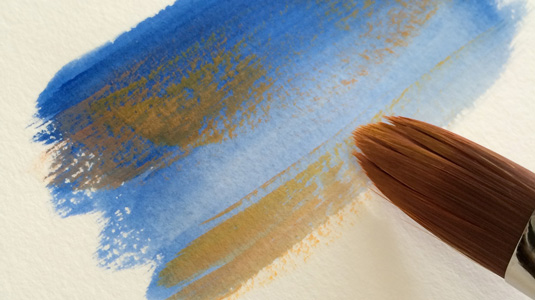
Dry brushing is a method of layering colour in a way that preserves texture. Using my brush, I load it with semi-wet gouache. I brush it out a bit, emptying my brush until only about 30 per cent of the original load is left. Then with quick strokes and no water, I swipe the brush across the surface quickly and lightly. You can see how the texture of the paper and brush helps create a ragged effect.
07. Blurred brushstrokes
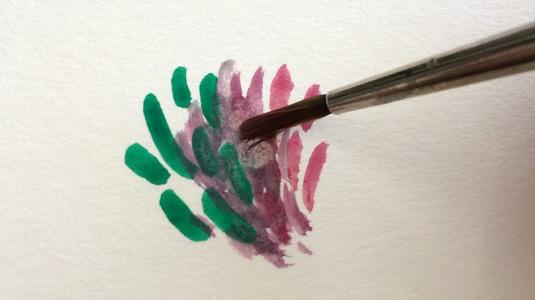
Blurred brushstrokes are similar to scumbling. You can use the brush and pigment to mix and blend colours as you paint on the paper. This is a more organic way of painting but it offers a looser look in colour and texture. Using my brush, I grab colour from my palette and place it on the paper, being careful not to blend too much. This can begin to look muddy. The key to is not overwork anything.
08. Blooms
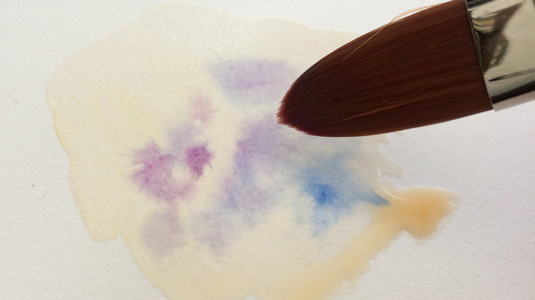
Gouache is a water-based medium, so you can water down to react and move around like watercolour. Blooms can be used to add in a base of colour you can then paint on top of. I load my brush with lots of water and a little pigment then I apply it to the paper. Using more water and a different colour, I blot blobs of colour into the puddle on the paper. See how the colour spreads and bleeds into the paper.
Words: Brynn Metheney
Brynn Metheney specialises in creature design, fantasy illustration and visual development for film, games and publishing. She lives and works in Oakland, California.
Like this? Read these:
- How to draw a bear
- How to improve your character drawing
- How to get started with ink drawing
- Discover the 5 best pencils for artists and designers
- How to choose the right drawing tools

Thank you for reading 5 articles this month* Join now for unlimited access
Enjoy your first month for just £1 / $1 / €1
*Read 5 free articles per month without a subscription

Join now for unlimited access
Try first month for just £1 / $1 / €1

The Creative Bloq team is made up of a group of art and design enthusiasts, and has changed and evolved since Creative Bloq began back in 2012. The current website team consists of eight full-time members of staff: Editor Georgia Coggan, Deputy Editor Rosie Hilder, Ecommerce Editor Beren Neale, Senior News Editor Daniel Piper, Editor, Digital Art and 3D Ian Dean, Tech Reviews Editor Erlingur Einarsson, Ecommerce Writer Beth Nicholls and Staff Writer Natalie Fear, as well as a roster of freelancers from around the world. The ImagineFX magazine team also pitch in, ensuring that content from leading digital art publication ImagineFX is represented on Creative Bloq.
